
Scotland's North Coast 500: a Road Trip like no other
Scotland’s road trip counterpart to America’s Route 66 is the North Coast 500; an epic journey, traveling across 516 miles of rugged terrain, towering mountains, vast lochs, sea caves, turquoise shores and dramatic scenery. Starting and finishing in Inverness, the North Coast 500 is made up of a series of roads that form a loop; roads that have existed for years, but in 2015 were linked, bringing together some of the Highlands most awesome features. It has grabbed the attention of adventurous road-trippers everywhere, and in my humble opinion, it is one of the best road trips in the world.
Timewise, you have many options. You can drive the whole thing in one day, Wacky Races style, and arrive back in Inverness gloating, but possibly suffering from the bends. Or, you can leave 10 or 14 days and make stop-offs, detours, day trips and take your time to relax at some of the best positioned campsites in the UK. Officially, the North Coast 500 is 516 miles long and passes through six regions of Scotland; Inverness-shire, Wester Ross, Easter Ross, Sutherland, Caithness and The Black Isle, but you can do shorter stretches or make it longer, touring out to see some of the many islands surrounding the northern coast and exploring the very best of the Highlands. “Life is a journey, not a destination,” said Ralph Waldo Emmerson. He's got an excellent point.
The Start: Inverness
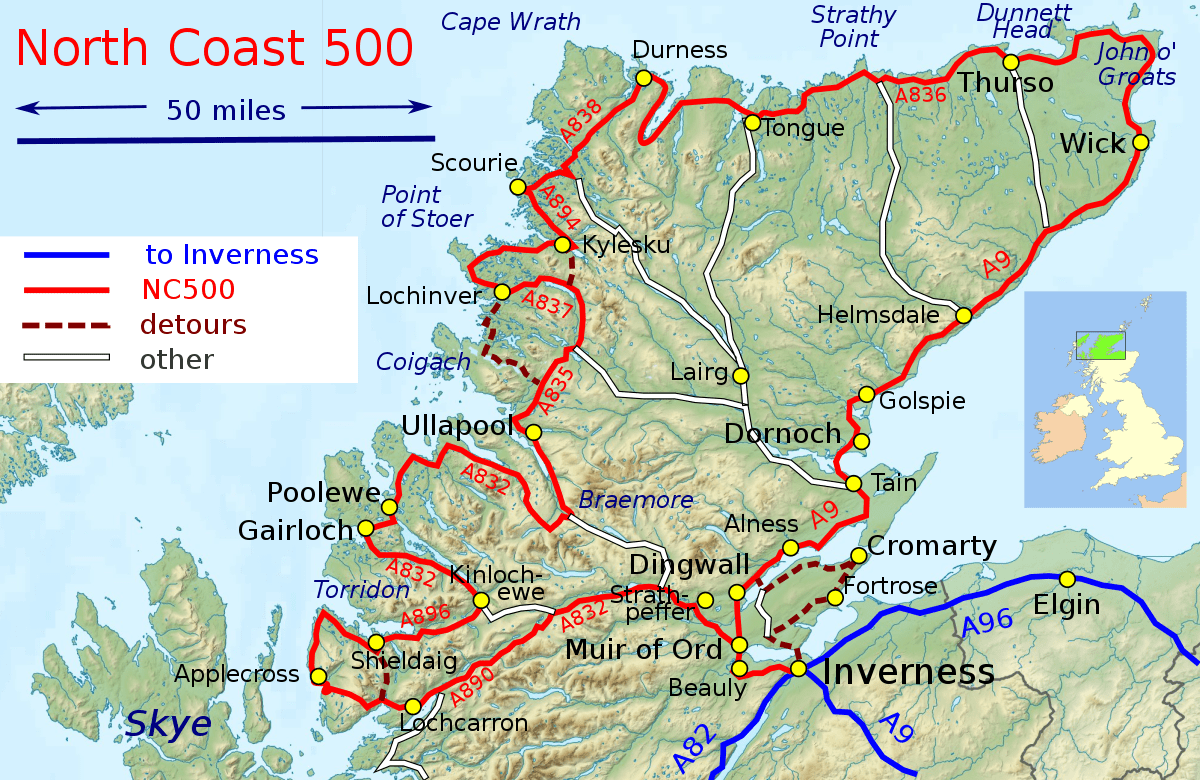
The Start: Inverness - Featured accommodation
The starting and finishing point of the North Coast 500 is Inverness Castle, perched on top of a hill overlooking the River Ness, with panoramic views across the capital city of the Highlands and beyond. The castle grounds are worth a visit, looking especially stunning at night when they are brilliantly lit up. A bus tour is a great way to explore the rest of Inverness and find out the history of the capital of the Highlands, or stroll through the streets and along the banks of the River Ness to discover museums, galleries and some good shopping. There are good campsites and other great places to stay in and around Inverness (there is also Loch Ness but more on that later), or you can just crack on and start your epic road trip around the North Coast 500.
picture credit: wikipedia
Inverness to Bealach na Ba, Applecross and Sheildaig
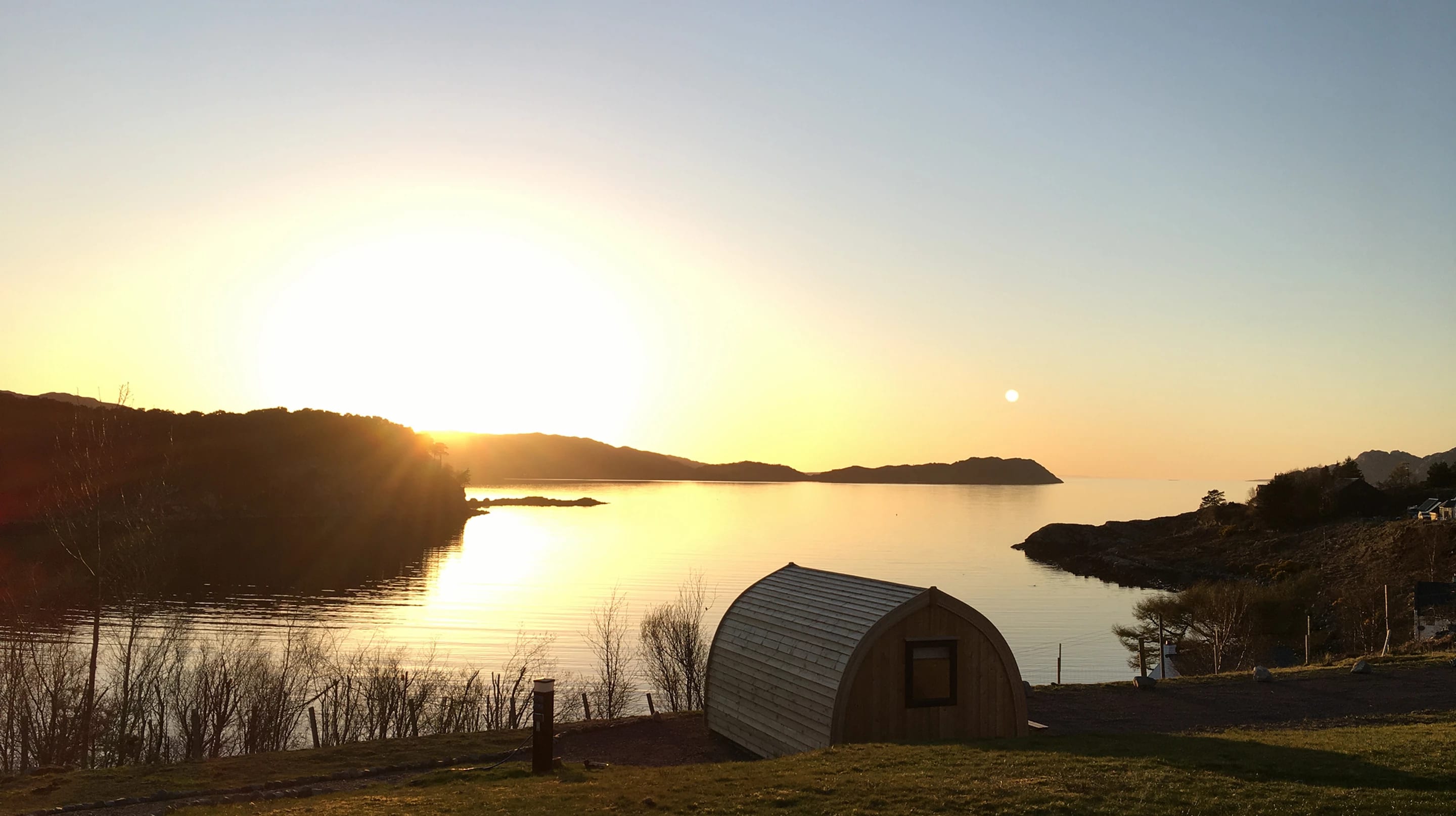
Inverness to Bealach na Ba, Applecross and Sheildaig - Featured accommodation
From Inverness, hit the road and get driving. The clockwise route which we are going (the other way around is just fine too) takes you west through Beauly, the Muir of Ord, Rogie Falls - worth a stop off - and on towards Lochcarron in Wester Ross. It is here that things start getting slightly hairy (Games of Thrones hairy) on the driving front, so pump the rescue remedy, put on some calming whale music, and stay focussed. Crossing the Bealach na Ba mountain pass (meaning "pass of the cattle in Gaelic) is an adventure and a half; an unforgettable drive along one of the most dramatic stretches of road in the UK, with Alpine-style hairpin bends and breathtaking views across Wester Ross, the Isle of Skye and the Outer Hebrides. It is not for the faint-hearted, but the scenic rewards are fully worth it. End your day in Applecross and pitch up at the campsite here, or drive for another hour along the coastal road to the village of Sheildaig, and bed down at the lovely Shieldaig Camping and Cabins. It's worth spending a few days here if you have the time, to explore the Highlands either by hiking, climbing, mountain biking or kayaking around the inlets and bays of the Atlantic coastline.
picture credit: Sheildaig Camping and Cabins
Sheildaig to Ullapool
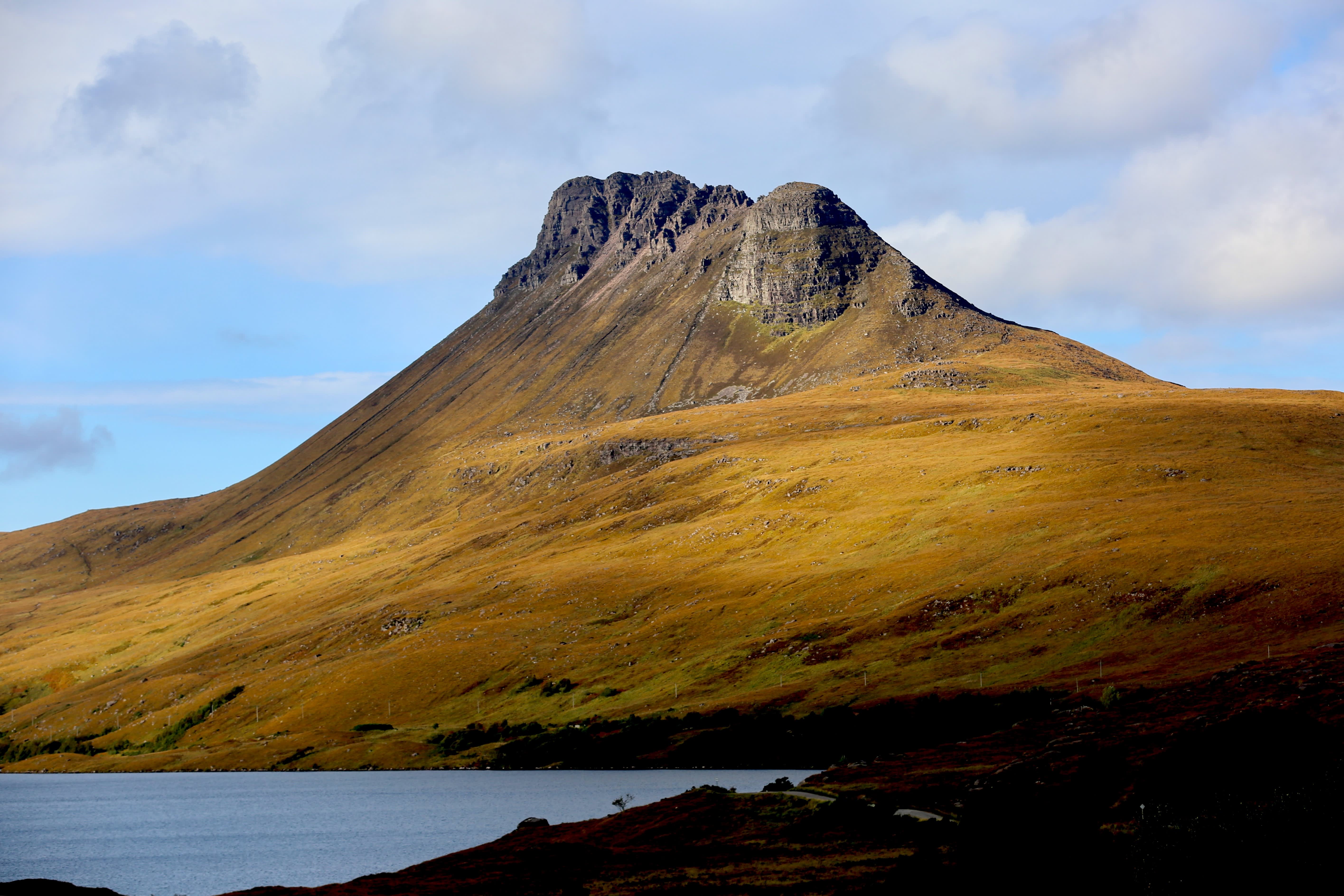
Sheildaig to Ullapool - Featured accommodation
Leave lovely Shieldaig behind you and head towards Torridon, driving through the glorious mountains of the Beinn Eighe National Nature Reserve. Kinlochewe to Gairloch is one of the most stunning parts of the trip, following the shores of the beautiful Loch Maree all the way out to Gairloch, with Slioch mountain towering over you and picturesque islands dotted around. Before you get to Ullapool, stop off at Loch Broom to take a walk up to the Corrieshalloch Gorge, an impressive ravine formed in the ice age 2.6 million years ago. The water cascades 150 feet down the Falls of Measach into the gorge, and from the suspension bridge near the car park you get the most impressive views. Ullapool is a great base for exploring this area and there is lots to do; whales, dolphins, sharks, seals, otters and puffins can be spotted on a boat cruise, hike up the Stac Pollaidh (a straightforward two-hour climb with breathtaking views) or take the ferry from Ullapool over to the Isle of Lewis. Ardmair Point Holiday Park, with views across Loch Kanaid and Ben Mhor mountain range is a great option for camping and doesn't take you too far off the North Coast 500 route.
picture: Stac Pollaidh
Ullapool to Durness
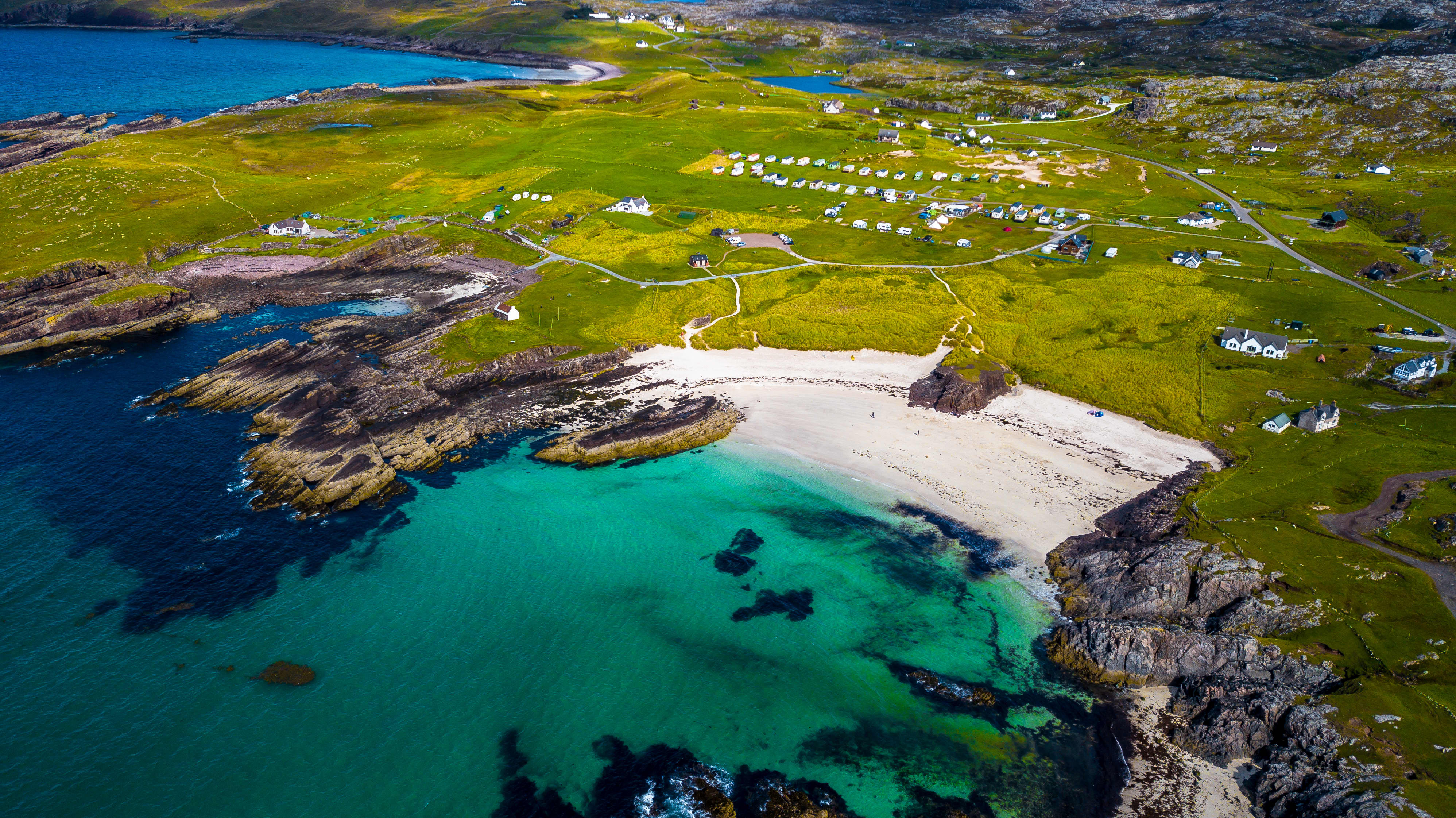
Ullapool to Durness - Featured accommodation
Back on the road again and head north. Not too far from Ullapool you will pass the ruins of Ardvreck Castle and Calda House sitting on the banks of Loch Assynt. Carry on by the Loch on the A837 (if you are going that way - you can also take the coast route through Lochinver if you wish) and then veer off down the B869 towards the sea, taking on some cliff edge / white knuckle driving in the process. The journey from Ullapool takes about an hour, and the destination at the end is well worth all the grip marks left behind on the steering wheel; Alchmelvic beach is one of the most stunning in the UK, if you are searching for white sands and turquoise waters (which I 100% am). Clachtoll beach is also another Maldives-looking affair with crystal clear shores and world class snorkelling. Stay here and pitch up at one of the lovely beachside campsites, or get more miles under your belt and keep driving north, cross the striking curve of Kylesku Bridge, through Scourie and finally towards Durness. It's a remote and scenic spot, and home to one of the most beautifully located campsites you'll find - on the cliffs overlooking the golden sands of Sango Bay. While you are staying, visit Smoo Cave, the largest sea cave in the UK, standing 15 metres high and set into limestone rocks. The waterfall inside falls 80 feet into the cave and during the warmer months (April - September) take a tour even further inside by boat. You can also climb Ben Hope, Scotlands most northerly Munro, visit the gorgeous shores of Balnakeil Beach or stock up on divine chocolate at the renowned Cocoa Mountain.
picture: Clachtoll beach
Durness to Thurso
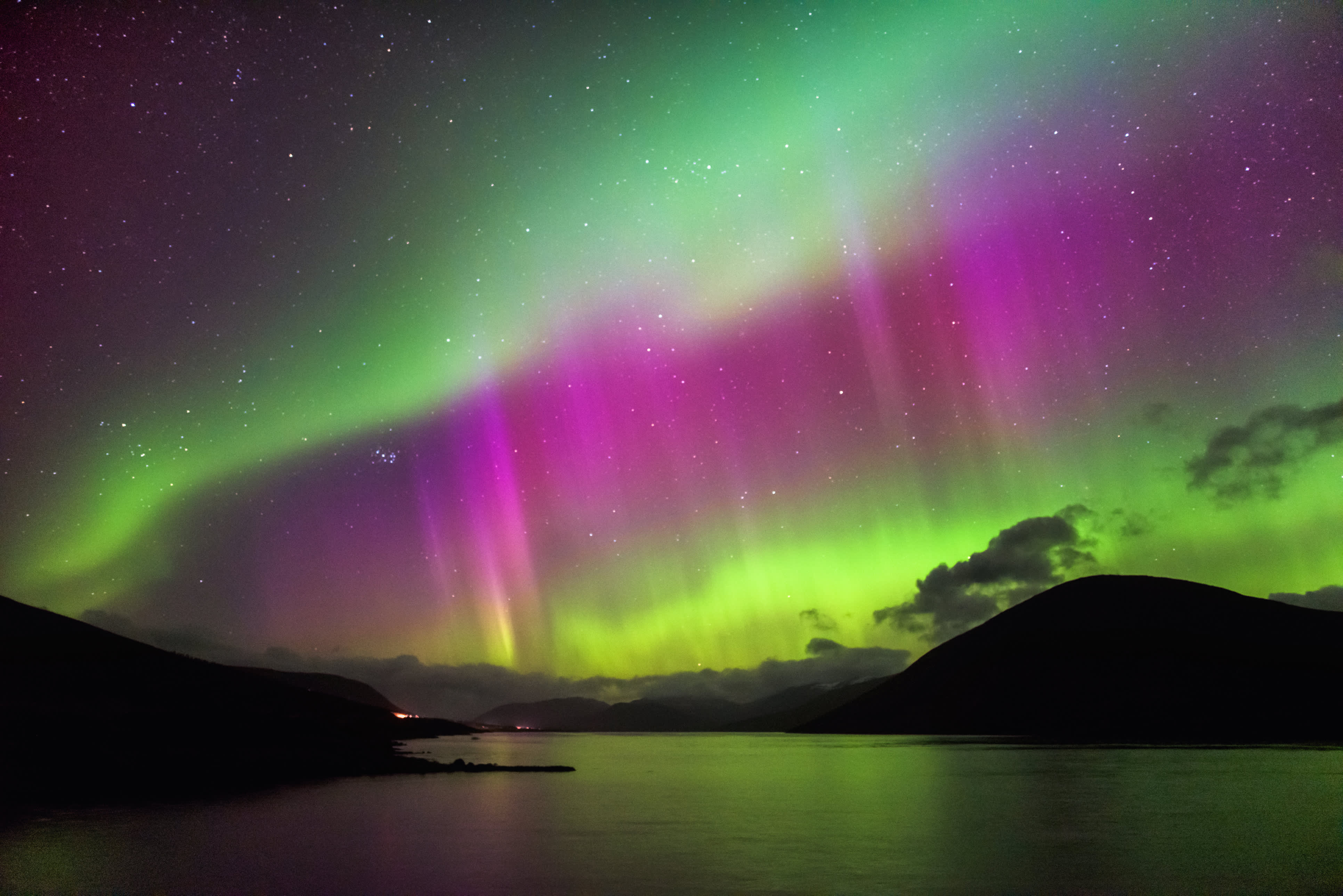
Durness to Thurso - Featured accommodation
The road from Durness connecting east to west runs around Loch Eribol on its way to the charming seaside village of Tongue. There is a straight causeway across the Kyle of Tongue, but a more scenic route is the southern single track road (you should be used to those by now) with superb views of the 3000 foot Ben Hope. While passing through Tongue visit Castle Varrich, a crumbling and dramatic ruin in a rugged spot overlooking the Kyle of Tongue. Past Tongue, head to Strathy Point, home to one of Sutherland's best beaches - Strathy Bay - bordered by cliffs on one side and the River Strathy on the other. Leave Sutherland and enter the historic county of Caithness to arrive at Thurso, the northernmost town on the mainland. It's a popular place for surfing; big waves are a common feature on the northern beaches up here, and national championships have been held in Thurso. From the port of Scrabster you can take a ferry to the Orkney Islands or go on a scenic cruise around Holburn Head. Camp a little way out of Durness at the most northerly campsite in the UK - Windhaven Camping and B&B; a great spot to base yourself for a few nights, boasting incredible views out over the sea and excitingly, a good place to see the Aurelia Borealis (Northern Lights) on a clear night.
Thurso to Wick (via John O Groats)
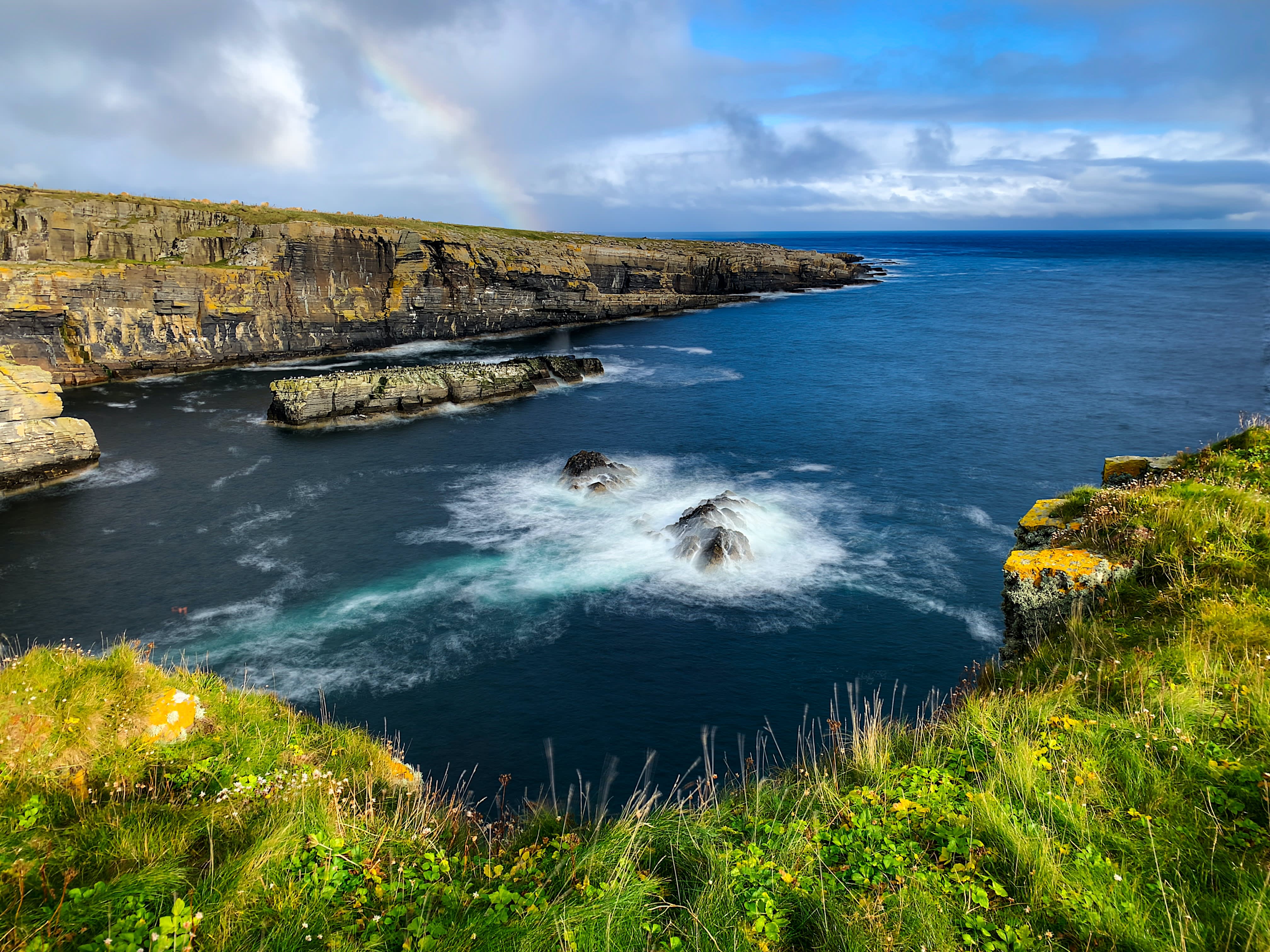
Thurso to Wick (via John O Groats) - Featured accommodation
Hop back onto the A836 and head to the most northerly tip of the UK - John O Groats. On the way here you can stop off at the Castle of Mey (previously a Royal Residence of the Queen Mother) a 16th century castle with beautiful gardens, a tea room and a farm animal centre. When you arrive at John O'Groats, walk from here to Duncansby Head and follow the coastline; this headland has great views over the Orkney Islands, Pentland Skerries and down to the south, Wick. The Old Red Sandstone sea stacks on view here date back over 400 million years, and there is a good footpath along the cliff to give walkers a closer look at some of the many sea birds resting on the ledges. If you happen to be here at the end of May/early June, you can get involved in the Orcawatch which takes place every year. The northern tip explored, set off towards the town of Wick, a former Viking settlement sitting astride the River Wick. The remains of the Castle of Old Wick sit on the edge of the cliffs half a mile south of here, overlooking the sea. While staying in Wick, it is also worth visiting Castle Sinclair Girnigow, which is made up of the ruins of two castles; the 15th Century Castle Girnigow and the 17th Century Castle Sinclair. Whiskey lovers can visit the Pulteney Distillery by Wick's historic harbour and see how this Single Malt scotch whiskey is made and matured.
Wick to Golspie
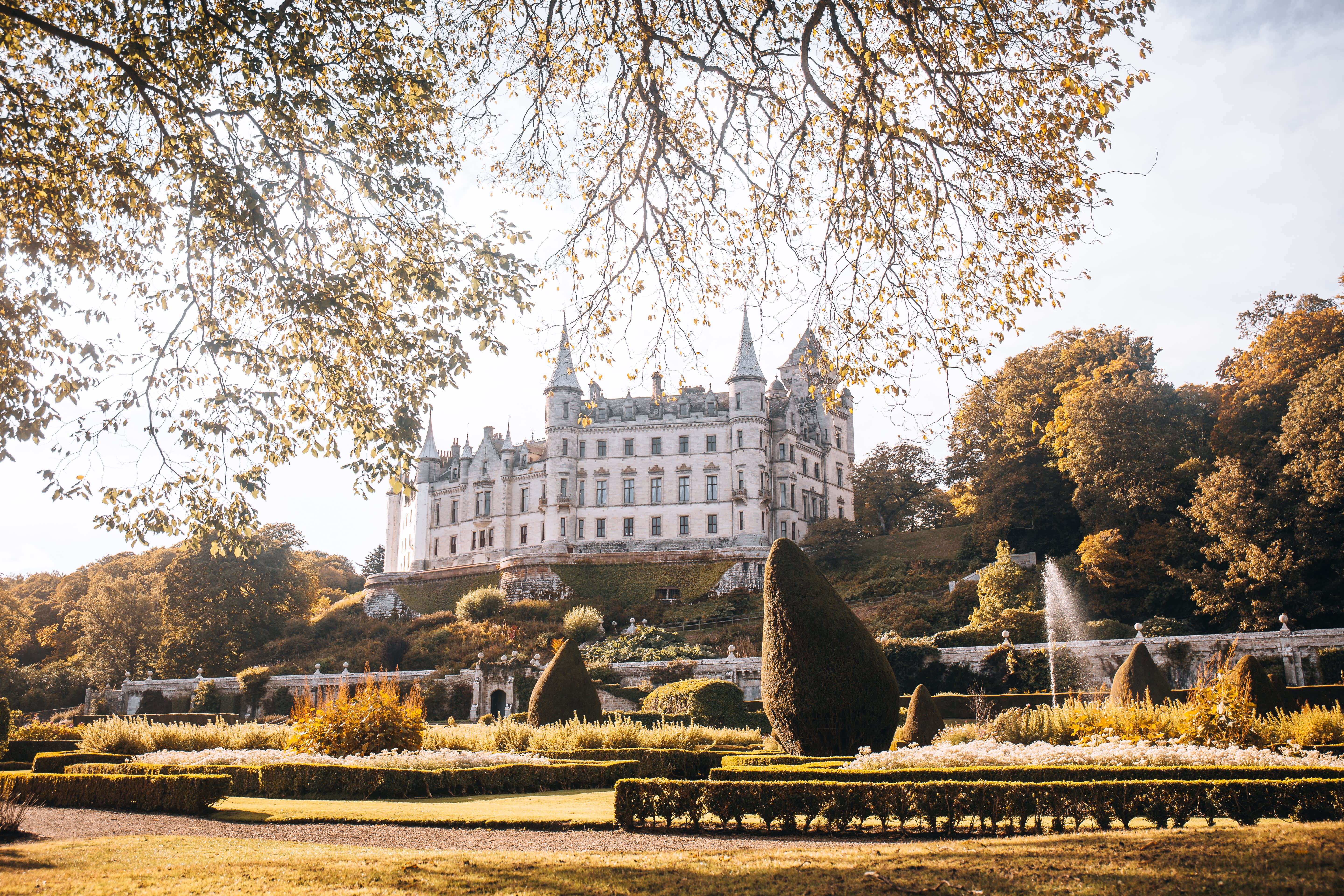
Wick to Golspie - Featured accommodation
The drive from Wick to Dornoch is about an hour and a half down the north east coast, and there is lots to do on route - so choose which stop off you fancy and take your time. As you travel south from Wick, it all goes a bit Indiana Jones; there are a number of archaeological sites, including the Yarrows Archeological Trail, an excellent circular hiking trail that links three Neolithic cairns, a hill fort, a standing stone, Bronze Age hut circles and an Iron Age broch. Also along this stretch are the Achavanich Standing Stones, the Grey Cairns of Camster and Cairn o' Get. If archaeology is not your thing, ignore all that and head to the village of Golspie which boasts a gorgeous long sandy beach and several excellent walks, including the Big Burn - a spectacular short hike up a gorge, across footbridges and ending in a stunning waterfall. Just outside the village is the fairytale-looking Dunrobin Castle, one of the grandest houses in the North of Scotland, resembling a French chateau with its towering conical spires. There are a few camping options on the coast, but my choice is Pondside, about 30 minutes inland from Golspie. You are not far from Route 500 and you will find the relaxing green farmland a welcome break, with amazing views over Loch Shin and the surrounding countryside.
Golspie to the Black Isle
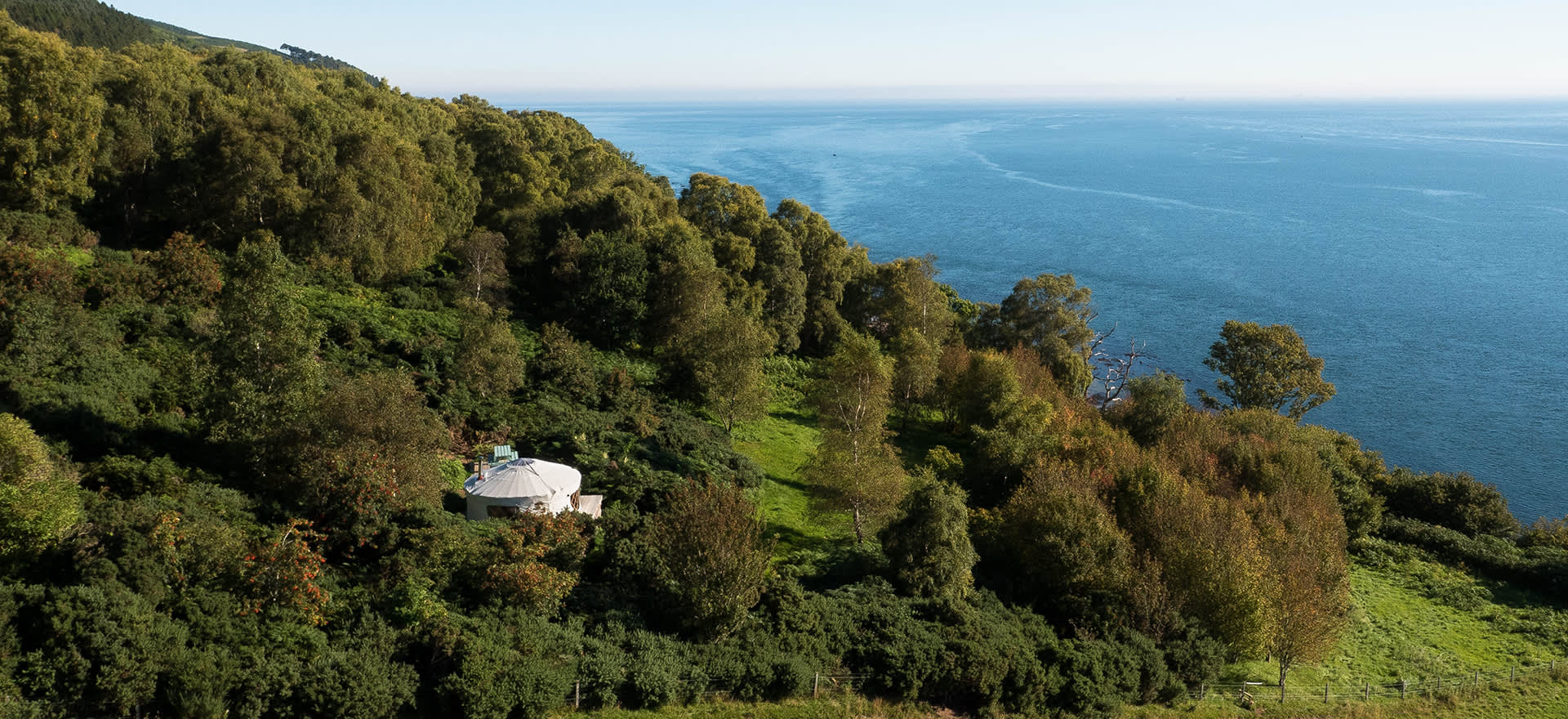
Golspie to the Black Isle - Featured accommodation
Not strictly on the North Coast 500 route, but The Black Isle is worth a small detour. Leave Golspie, drive through the pretty town of Dornoch, past Skibo Castle and the Glenmorangie Distillery, and eventually cross over the Cromarty Bridge and venture onto the Black Isle. Not so much an isle but a peninsula, surrounded by the Beauly Firth to the south and Moray Firth to the east. Chanonry Point in Fortrose is reportedly one of the best onshore locations in Europe to spot dolphins, or if you want to get a bit closer take a boat trip from Cromarty. For something a bit different, visit the Black Isle brewery; take a free tour and learn all about the beer-making process. In Rosemarkie, hike along the Fairy Glen trail to see the pretty Fairy Glen Falls. There are some lovely camping options here, but if you want to treat yourself, spend a night or two at The Black Isle Yurts; glamping in sheer comfort, with the most glorious views out to sea. A rather fabulous way to celebrate (nearly) reaching the end of your epic road trip.
Back to Inverness (and Loch Ness)
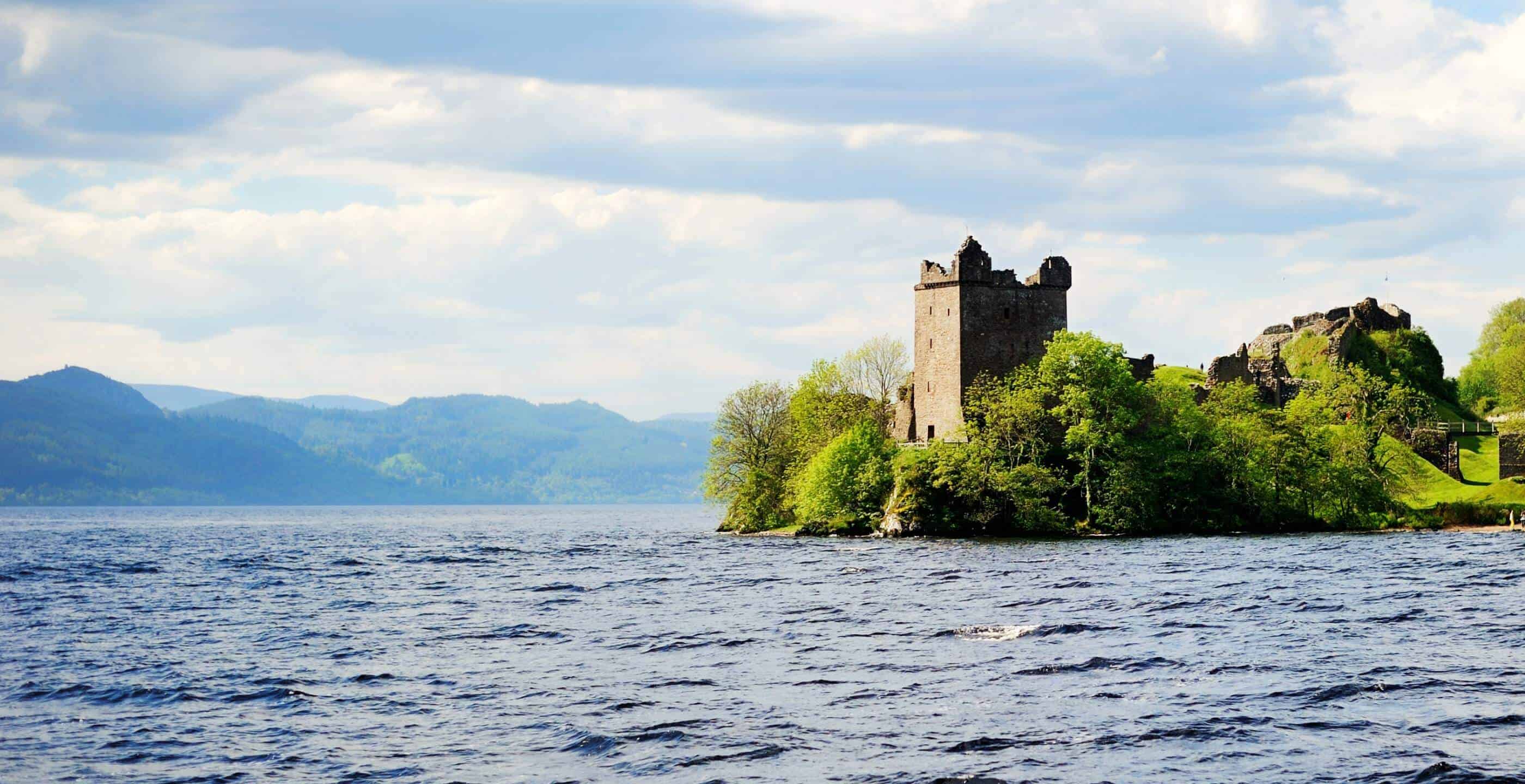
Back to Inverness (and Loch Ness) - Featured accommodation
From the Black Isle, you can get yourself back on the North Coast 500 trail and go via Dingwall and down to Inverness via the Muir of Ord, or you can cross directly from the Black Isle over the Kessock bridge - it's about a half hour drive. And you've done it, the 516 mile Route 500 is complete, hurrah! With this in mind, you can go wild for the night in Inverness, or do a drive-by and carry on going twenty minutes south to get down to Loch Ness. Whether you believe in the Loch Ness monster or not, it is a magical and brooding place to stay and there are plenty of stunning campsites offering glamping and touring camping pitches right on the shores. You can explore the Loch by boat or hire a canoe and head out to paddle yourself around. Visit the charming village of Drumnadrochit and the nearby ruins of Urquhart Castle, a 12th century fortress sitting on the banks of Loch Ness.
picture credit: Historic UK
This truly is Britains's best road trip.
Featured in:
Featured Accommodations
Inverness, Highlands, Scotland, UK Accommodations
Discover amazing camping and glamping sites in Inverness, Highlands, Scotland, UK. Perfect for your next outdoor adventure.
Scotland Accommodations
Discover amazing camping and glamping sites in Scotland. Perfect for your next outdoor adventure.
Orkney Islands, Highlands, Scotland, UK Accommodations
Discover amazing camping and glamping sites in Orkney Islands, Highlands, Scotland, UK. Perfect for your next outdoor adventure.
Related Experiences
Camping and Glamping Experiences
Find exciting camping and glamping activities and experiences. Perfect for adventure seekers and families.
Canoeing and Kayaking Experiences
Find exciting canoeing and kayaking activities and experiences. Perfect for adventure seekers and families.
Dolphin and Whale Watching Experiences
Find exciting dolphin and whale watching activities and experiences. Perfect for adventure seekers and families.

